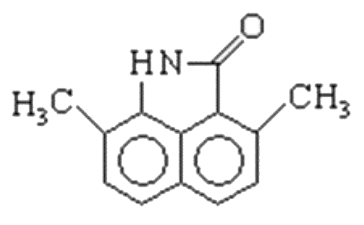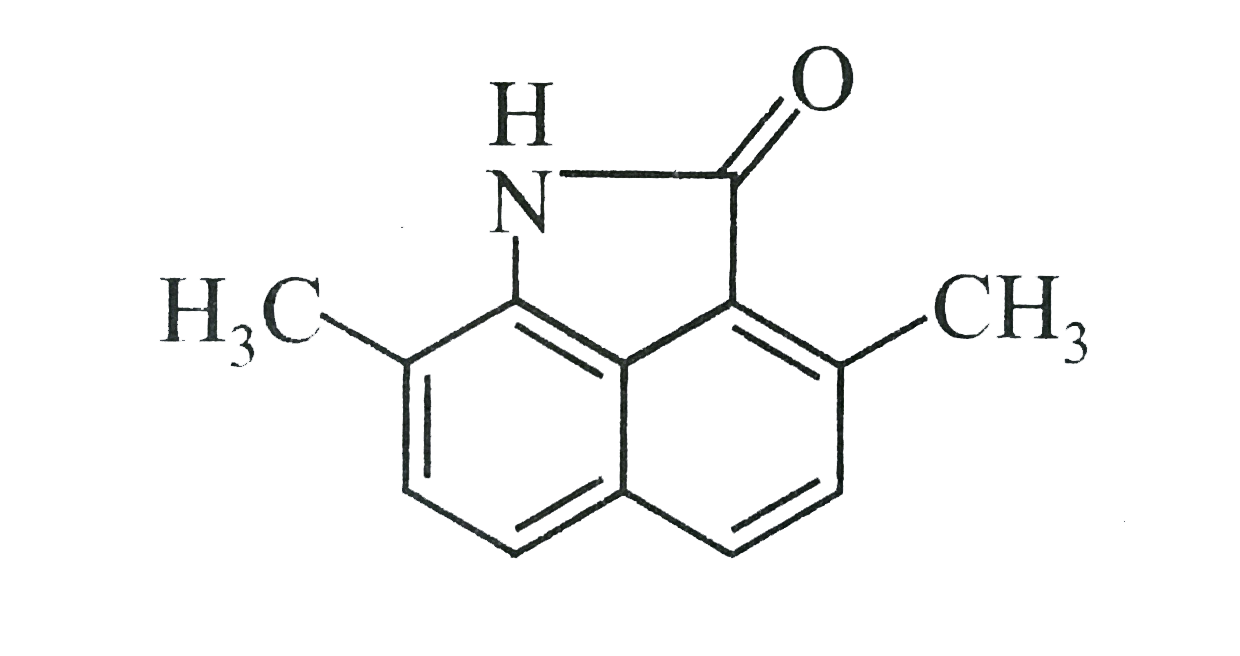Major product obtained when 2-chloro-3-methyl butane is treated with ethanolic KOH is likely to give
Neopentyl lcohol
Pentene
2-Methyl-2-butene
No reaction
The correct Answer is:C
To determine the major product obtained when 2-chloro-3-methylbutane is treated with ethanolic KOH, we can follow these steps:
Step 1: Identify the Structure of the Reactant
The first step is to draw the structure of 2-chloro-3-methylbutane. The compound has four carbon atoms in a straight chain (butane), with a chlorine atom at the second carbon and a methyl group at the third carbon.
Structure:
CH3|CH3−CH−CH−CH3|Cl
Step 2: Understand the Reaction Type
When 2-chloro-3-methylbutane is treated with ethanolic KOH, it undergoes a dehydrohalogenation reaction. This means that HCl will be eliminated from the molecule, leading to the formation of an alkene.
Step 3: Determine Possible Products
There are two possible ways to eliminate HCl:
1. The chlorine atom can leave from the second carbon, and a hydrogen atom can leave from the adjacent third carbon.
2. The chlorine atom can leave from the second carbon, and a hydrogen atom can leave from the first carbon.
Possible Products:
1. First Product:
- Chlorine leaves from the second carbon, and a hydrogen leaves from the third carbon.
- Resulting product: CH3C(CH3)=CH2 (2-methyl-2-butene)
2. Second Product:
- Chlorine leaves from the second carbon, and a hydrogen leaves from the first carbon.
- Resulting product: CH3CH=CH(CH3)CH3 (2-methyl-1-butene)
Step 4: Determine the Major Product
To determine which product is the major one, we need to consider the stability of the alkenes formed. More substituted alkenes are generally more stable due to hyperconjugation and the inductive effect.
- 2-methyl-2-butene (first product) has more alkyl groups attached to the double bond (3 substituents).
- 2-methyl-1-butene (second product) has fewer alkyl groups attached to the double bond (only 1 substituent).
Conclusion:
The major product is 2-methyl-2-butene, which is more substituted and therefore more stable.
Final Answer:
The major product obtained when 2-chloro-3-methylbutane is treated with ethanolic KOH is 2-methyl-2-butene.
---
The first step is to draw the structure of 2-chloro-3-methylbutane. The compound has four carbon atoms in a straight chain (butane), with a chlorine atom at the second carbon and a methyl group at the third carbon.
CH3|CH3−CH−CH−CH3|Cl
When 2-chloro-3-methylbutane is treated with ethanolic KOH, it undergoes a dehydrohalogenation reaction. This means that HCl will be eliminated from the molecule, leading to the formation of an alkene.
There are two possible ways to eliminate HCl:
1. The chlorine atom can leave from the second carbon, and a hydrogen atom can leave from the adjacent third carbon.
2. The chlorine atom can leave from the second carbon, and a hydrogen atom can leave from the first carbon.
1. First Product:
- Chlorine leaves from the second carbon, and a hydrogen leaves from the third carbon.
- Resulting product: CH3C(CH3)=CH2 (2-methyl-2-butene)
- Chlorine leaves from the second carbon, and a hydrogen leaves from the first carbon.
- Resulting product: CH3CH=CH(CH3)CH3 (2-methyl-1-butene)
To determine which product is the major one, we need to consider the stability of the alkenes formed. More substituted alkenes are generally more stable due to hyperconjugation and the inductive effect.
- 2-methyl-1-butene (second product) has fewer alkyl groups attached to the double bond (only 1 substituent).
The major product is 2-methyl-2-butene, which is more substituted and therefore more stable.
The major product obtained when 2-chloro-3-methylbutane is treated with ethanolic KOH is 2-methyl-2-butene.
Topper's Solved these Questions
- BOOK - DINESH PUBLICATIONCHAPTER - ORGANIC COMPOUNDS WITH FUNCTIONAL GROUP CONTAINING HALOGENS EXERCISE - Revision Questions From Competitive Exams154videos
ORGANIC COMPOUNDS WITH FUNCTIONAL GROUP CONTAINING HALOGENS
- BOOK - DINESH PUBLICATIONCHAPTER - ORGANIC COMPOUNDS WITH FUNCTIONAL GROUP CONTAINING HALOGENS EXERCISE - Selected Straight Objective Type MCQs78videos
ORGANIC COMPOUNDS WITH FUNCTIONAL GROUP CONTAINING HALOGENS
- BOOK - DINESH PUBLICATIONCHAPTER - NO IDEAEXERCISE - Unit Test -1videos
NO IDEA
- BOOK - DINESH PUBLICATIONCHAPTER - POLYMERSEXERCISE - Matrix5videos
POLYMERS
Similar Questions
Knowledge Check
- Question 1 - Select One
The major product formed when 2-bromo-methylbutane is refluxed with ethanolic KOH is:
A2-methylbut-1-eneB2-methylbut-2-eneC2-methylbutan-1-olD2-methylbutan-2-ol - Question 2 - Select One
The major product formed when 2-bromo-2-methylbutane is refluxed with ethanolic KOH is
A2-methylbut-2-eneB2-methylbutan-1-olC3-methylbutan-2-olD2-methylbutan-2-ol - Question 3 - Select One
The major product formed when 2-bromo-2-methylbutane is refluxed with ethanolic KOH is:
A2-methylbut-2-eneB2-methylbutan-1-olC3-methylbutan-2-olD2-methylbutan-2-ol
Neopentyl chloride on reaction with ethanolic KOH is likely to give
View SolutionThe major product obtained when - Butane is treated with bromine in the presence of light is
View SolutionThe major product obtained when Br2/Fe is treated with
 isView Solution
isView SolutionThe compound obtained as the major product on refluxing 2-Chloro-2-methylbutane with alcoholic Koh solution is __________.
View Solution
The major product obtained when Be2Fe is treated withView Solution

